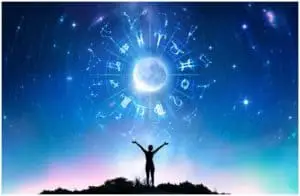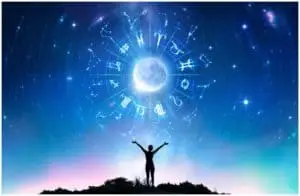Having originated 2,500 years ago, Buddha’s teachings have formed the core of the religion known as Buddhism.
Over the centuries, Buddhism spread from India into all corners of Asia. As it spread, it transformed into a wide variety of beliefs and practices.
A mantra is a religious syllable or poem, typically from the Sanskrit language. Their use varies according to the school and philosophy associated with the mantra.
They are primarily used as spiritual conduits, words, or vibrations that instill one-pointed concentration in the devotee.
Other purposes have included religious ceremonies to accumulate wealth, avoid danger, or eliminate enemies.
The use of mantras was later incorporated into Vajrayana and became so central to it that this school of Buddhism is sometimes also called Mantrayana.
Vajrayana Buddhism in Japan is called Shingon, the Japanese word for ”mantra.”
List Of 8 Buddhist Mantras:
1. Medicine Buddha Mantra
It is used to eliminate not only the pain of diseases but also helps in overcoming the major inner sickness of attachment, hatred, jealousy, desire, greed, and ignorance.
Lyrics:
”Tayata
Om Bekandze Bekandze
Maha Bekandze
Radza Samundgate Soha”
Meaning:
”May the many sentient beings who are sick,
Quickly be freed from sickness.
And may all the sicknesses of beings
Never arise again.”
2. Heart Sutra Mantra
This mantra speaks of transcending thoughts and concepts to reside in the pure essence of being at peace and at one with all. The oneness that is beyond all dualities.
Lyrics:
”Gate gate paragate parasamgate. Bodhi! Svaha!”
Meaning:
”Gone, gone, gone over, gone fully over. Awakened! So be it!”
3. Green Tara Mantra
The practice of Green Tara helps to overcome fear and anxiety, but devotees also believe that she can grant wishes, eliminate the suffering of all kinds, and bring happiness.
Lyrics:
”OM TARE TUTTARE TURE SVAHA”
Meaning:
”Om! O Tara! I beg of you, O Tara! O swift one!Hail!”
4. Om Mani Padme Hum
One of the most sacred Buddhist mantras or verbal formulas; used very frequently in Tibet and in surrounding countries of the Far East.
Not only is every syllable said to have a secret power of producing a definite result, but the whole invocation has a number of meanings.
When properly pronounced or changed, it produces different results, differing from the others according to the intonation and given the formula and its syllables.
This mystic sentence above all refers to the indissoluble union between man and the universe, and thus conveys “I am in thee and thou art in me.”
Each of us has within himself the jewel in the lotus or the divine self within.
When understood in a cosmic sense, it signifies the divine cosmic self within, inspiring all beings within the range of that cosmic divinity.
https://www.youtube.com/watch?v=Tq3eIaKQvfE
5. White Tara Mantra
White Tara can be called upon to give you healing and well-being on all levels – physical, emotional, and spiritual.
With this mantra, you can achieve health, wisdom, satisfaction, peace, love, wealth, and fulfill all your wishes.
Lyrics:
”OM TARE TUTTARE TURE MAMA AYUR
PUNYE JNANA PUSHTIM KURU YE SVAHA.”
Meaning:
”The liberator of suffering shines light upon me to create an abundance of merit and wisdom for long life and happiness.”
6. Vajrasattva Mantra
Vajrasattva is the manifestation of the purity of body, speech, and mind of all the Buddhas.
The practice of Vajrasattva is especially effective for purifying negative karmic imprints created by the ten non-virtuous actions and transgressions of precepts, vows, and commitments.
By applying the Four Opponent Powers, this practice can help to purify our negative actions and alleviate guilt, remorse, and feelings of unworthiness that keep us from going forward in our lives.
Lyrics:
”OM BENDZA SATO SAMAYA
MANUPALAYA, BENDZA SATO DENOPA
TITHA, DRIDO ME BHAVA, SUTO KAYO
ME BHAVA, SUPO KAYO ME BHAVA,
ANURAKTO ME BHAVA, SARVA
SIDDHI ME PRAYATSA, SARVA KARMA
SU TSAME, TSITTAM SHRIYAM KURU
HUM, HA HA HA HA HO, BHAGAVAN
SARVA TATHAGATA, BENDZA MAME
MUTSA, BENDZI BHAVA MAHA
SAMAYA SATO AH”
Meaning:
”Oh Vajrasattva, protect the samaya
May you remain firm in me
Grant me complete satisfaction
Grow within me (Increase the positive in me)
Be loving towards me
Grant me all the Siddhis
Show me all the karma (activities)
Make my mind good, virtuous and auspicious
The heart essence seed syllable of Vajrasattva
Symbolizes the four immeasurables, the four empowerments,
The four joys and the four kayas
The exclamation of joy at this accomplishment
Oh! All the blessed Tathagatas
May I be fully liberated in the Vajra
Grant me the realization of the Vajra nature
Oh great samaya sattva, Ah!”
7. Buddha Amitabha Mantra
The Amituofo mantra, or mantra of Amitabha Buddha, is a very popular mantra, for it is the main cultivation technique of the Buddhist Pure Land school founded by the Chinese monk Hui-Yuan.
To practice the Amituofo mantra, an individual need only silently mantra “Namo Amituofo” or “Amituofo” wherever they are, constantly keeping both the mantra and Amituofo in their mind and heart.
Lyrics:
”OM AMI DEWA HRI”
https://www.youtube.com/watch?v=0Z347bvZk-Y&ab_channel=MagicMantra
8. Manjushri Mantra
Manjusri is the bodhisattva personifying supreme wisdom.
Manjushri is the oldest and most significant Bodhisattva in Mahayana literature. Manjushri is a Bodhisattva who represents wisdom, and his mantra also symbolizes that quality.
He holds a sword in his right hand — symbolizing his ability to cut through delusion. In his left hand, by his heart, he holds the stem of a lotus flower, which bears a book — the Perfection of Wisdom teaching, or Prajnaparamita.
Lyrics:
”Om Ara Pa Za Na Di.”
Featured image credit – Shutterstock
READ THIS NEXT: 10 Kundalini Mantras With Their Meanings
- About the Author
- Latest Posts
As a founder and chief author at InsightState.com, Bulgarea Candin helps readers on their spiritual journeys. His writings are designed to inspire creativity and personal growth, guiding readers on their journey to a more fulfilled and enlightened life.





Carolyn
Sunday 20th of September 2020
Is there a mantra aud gummra nhama jag dish?
Winter Morris
Friday 29th of May 2020
Thank you for this work of translation. I am trying to get a translation for: HRIH VAJRA KRODHA HAYAGRIVA HULU HULU HUM PHAT. Can you assist?
Brian
Sunday 2nd of August 2020
Hayagriva is the fierce manifestation of Avalokiteshvara who manifests with the head of a Horse